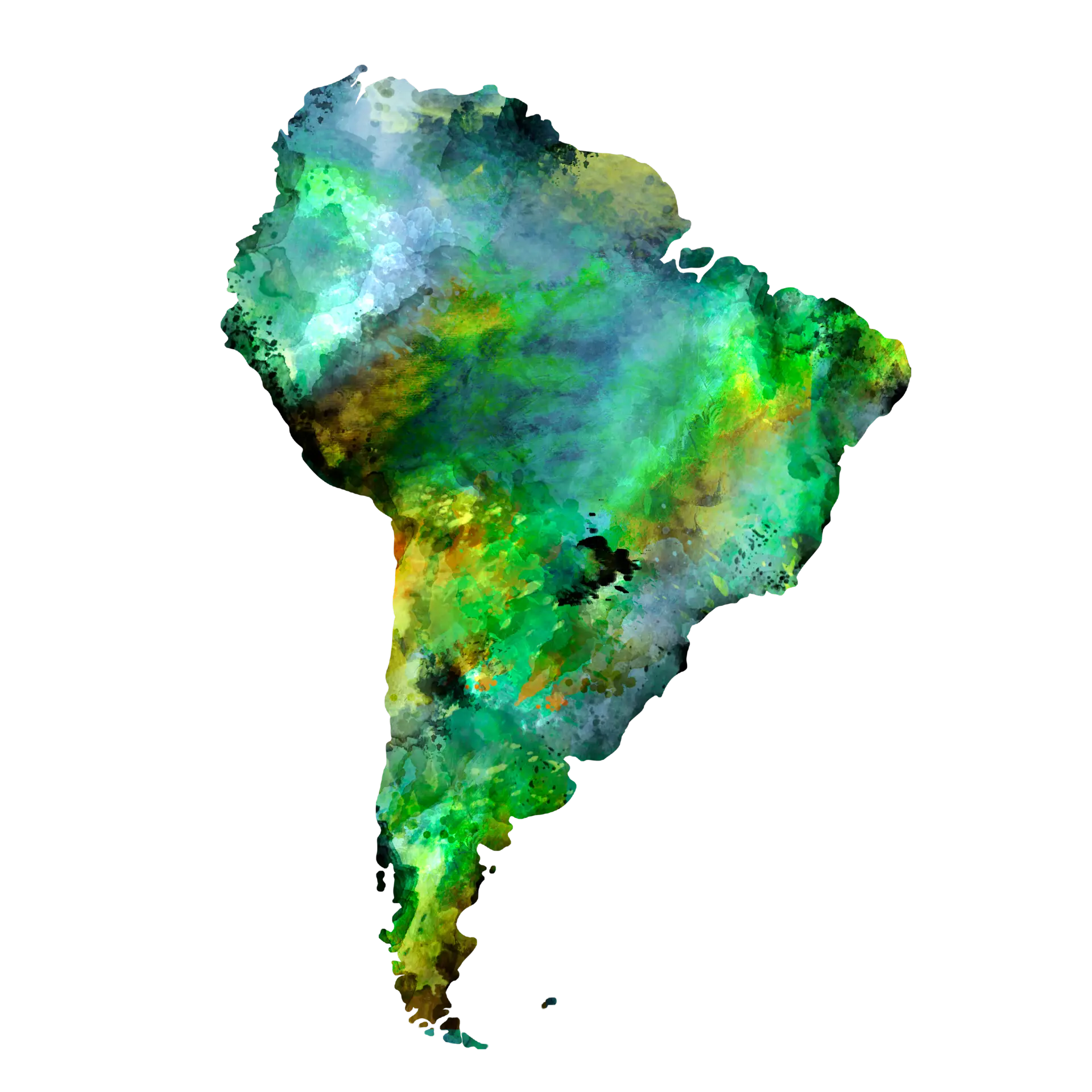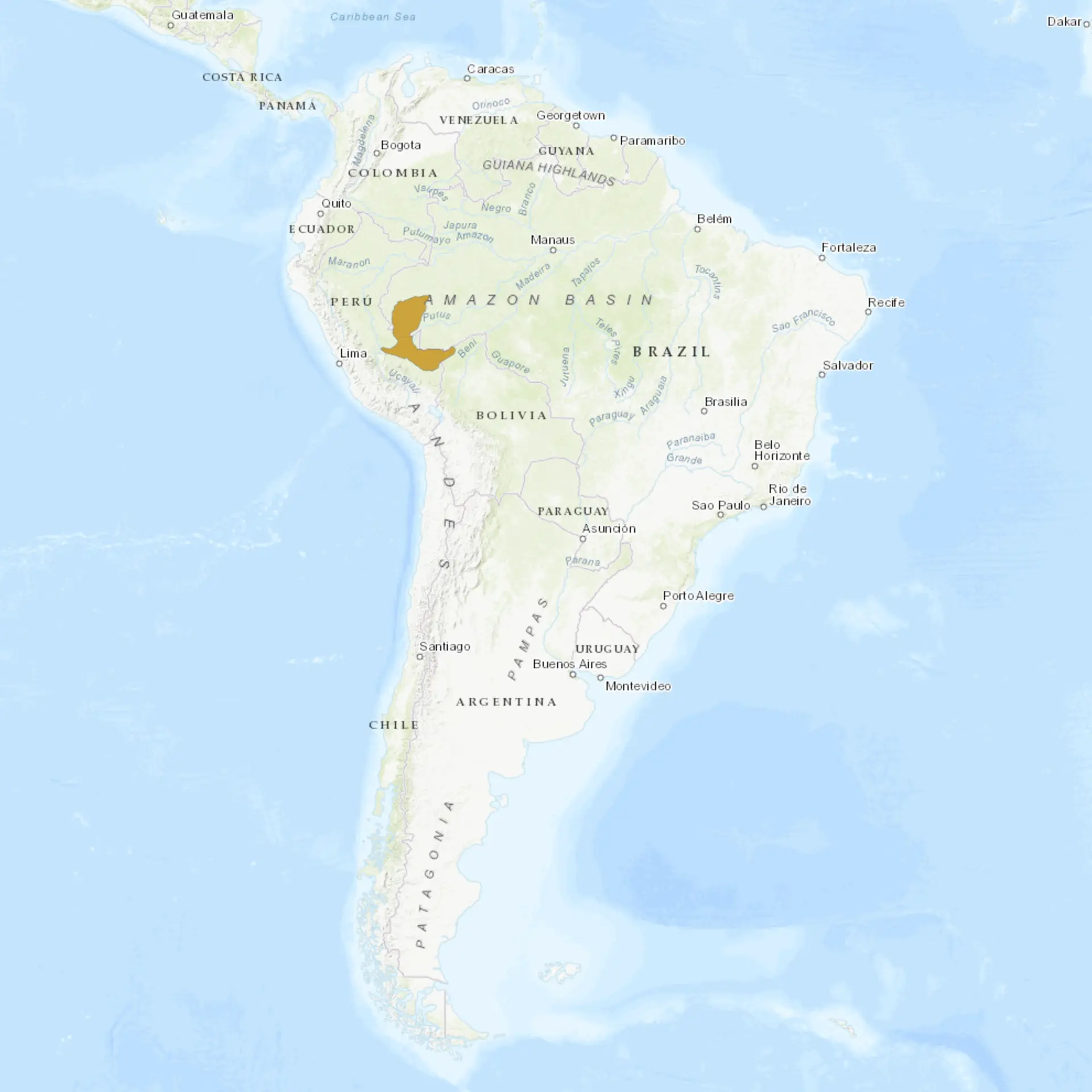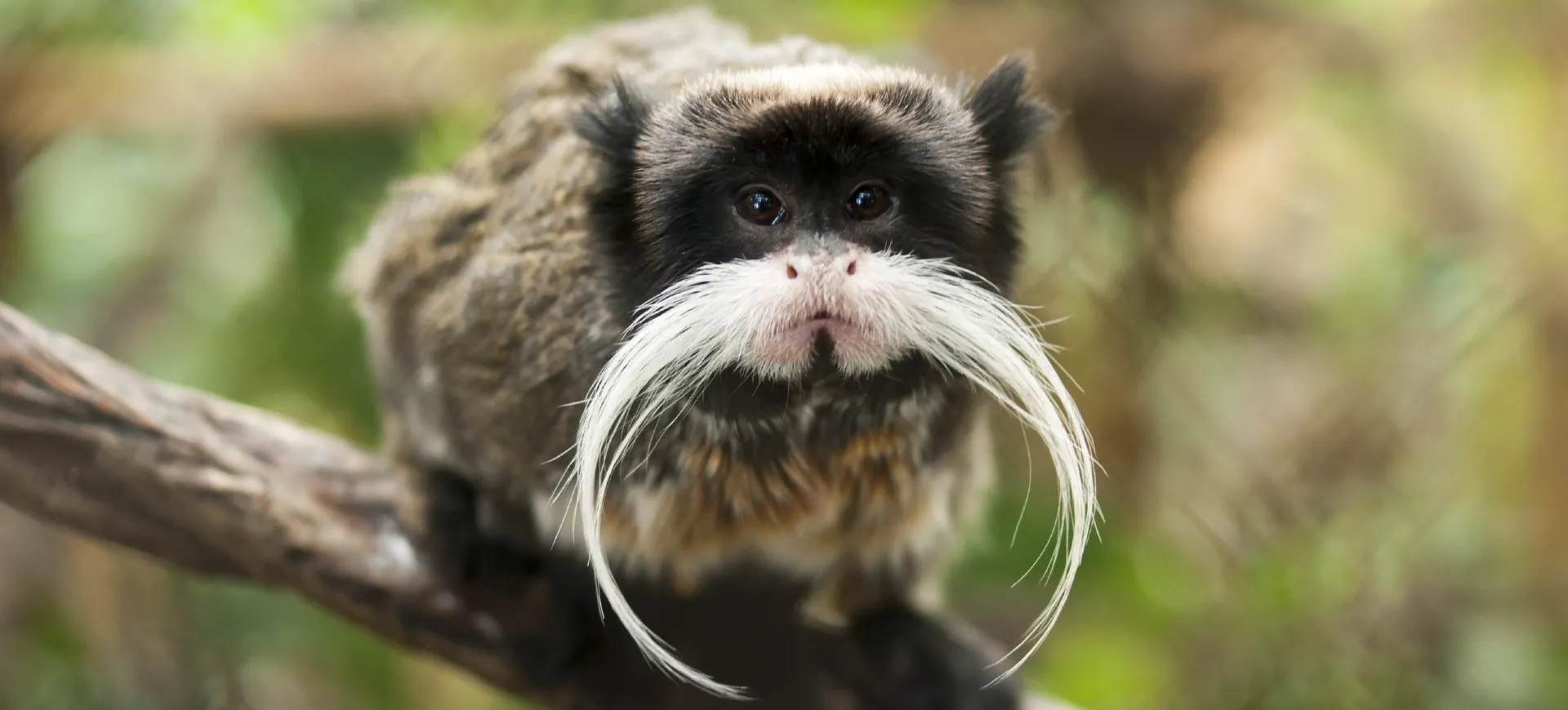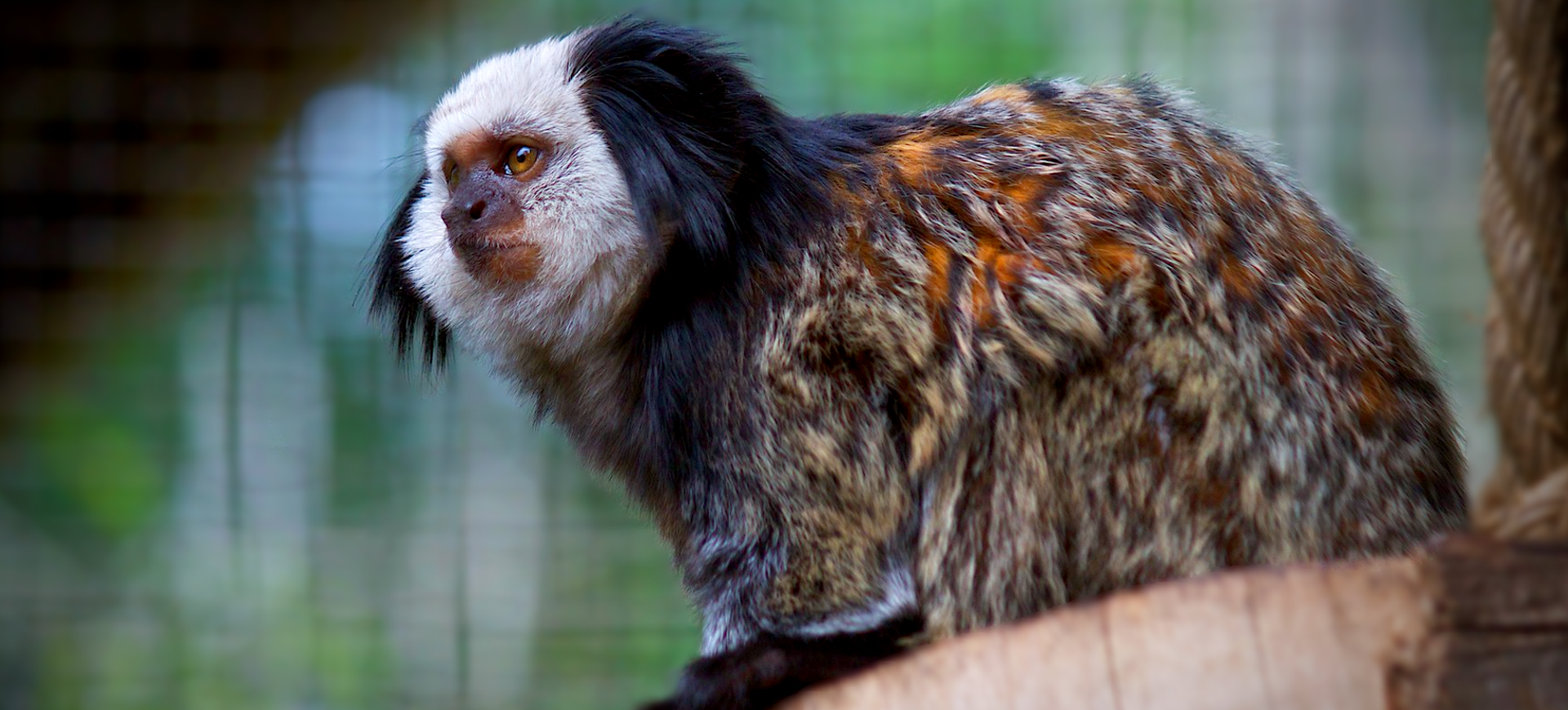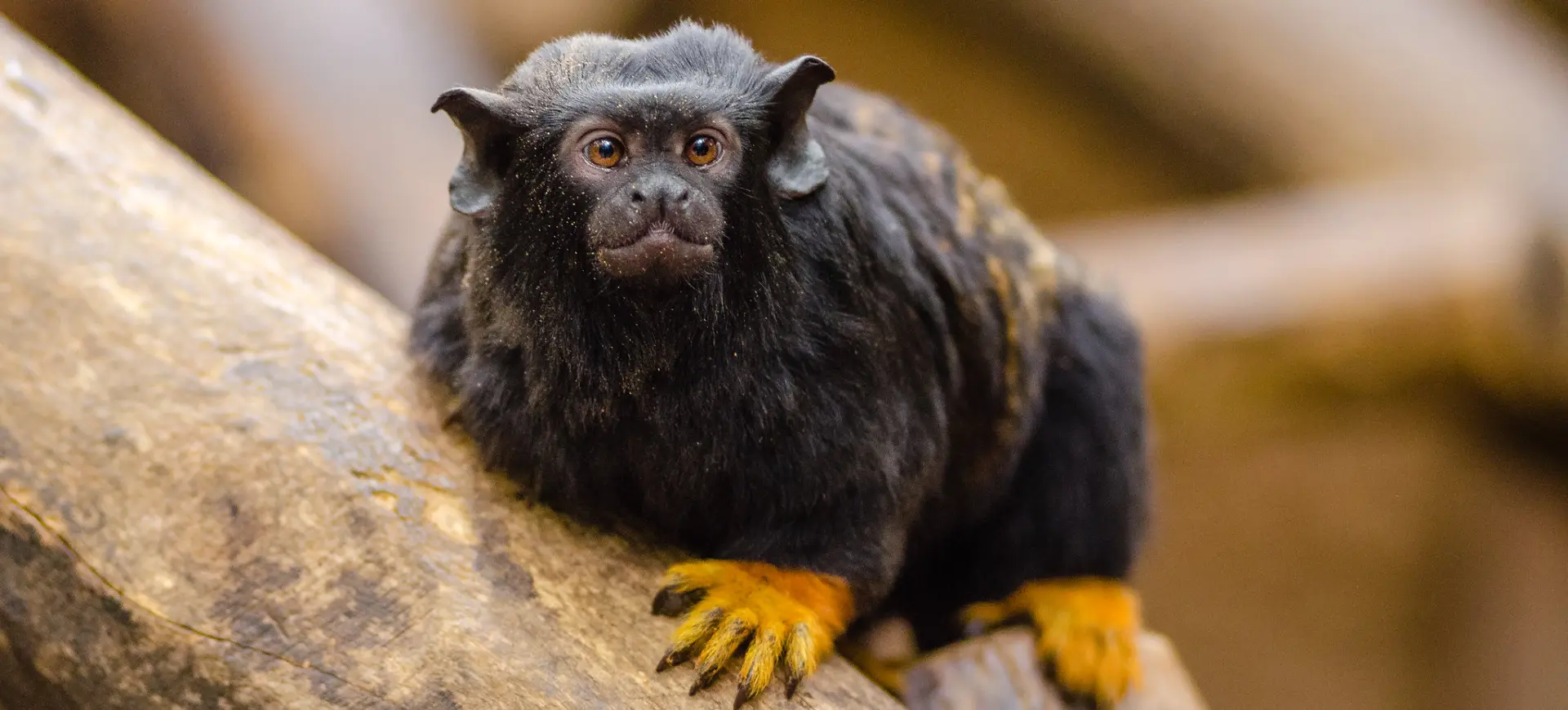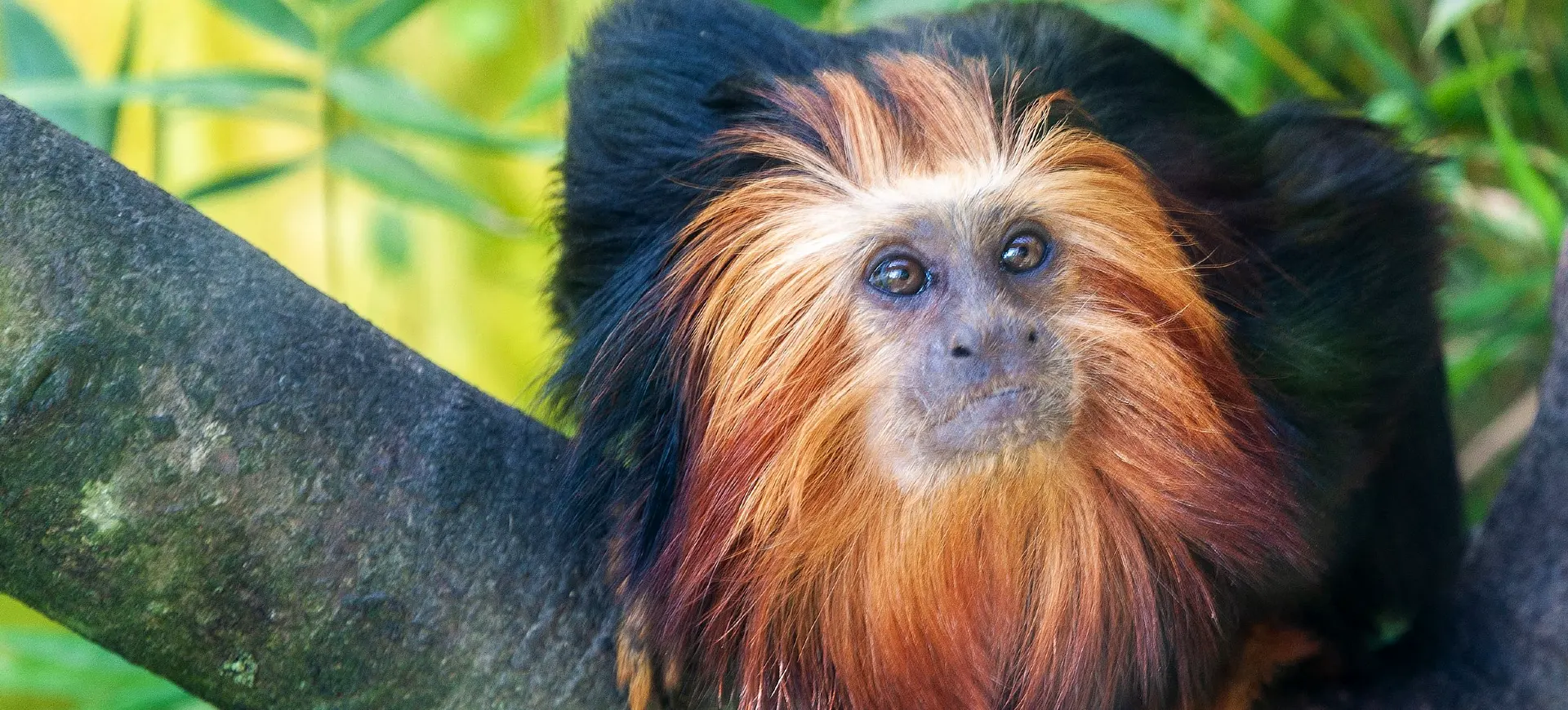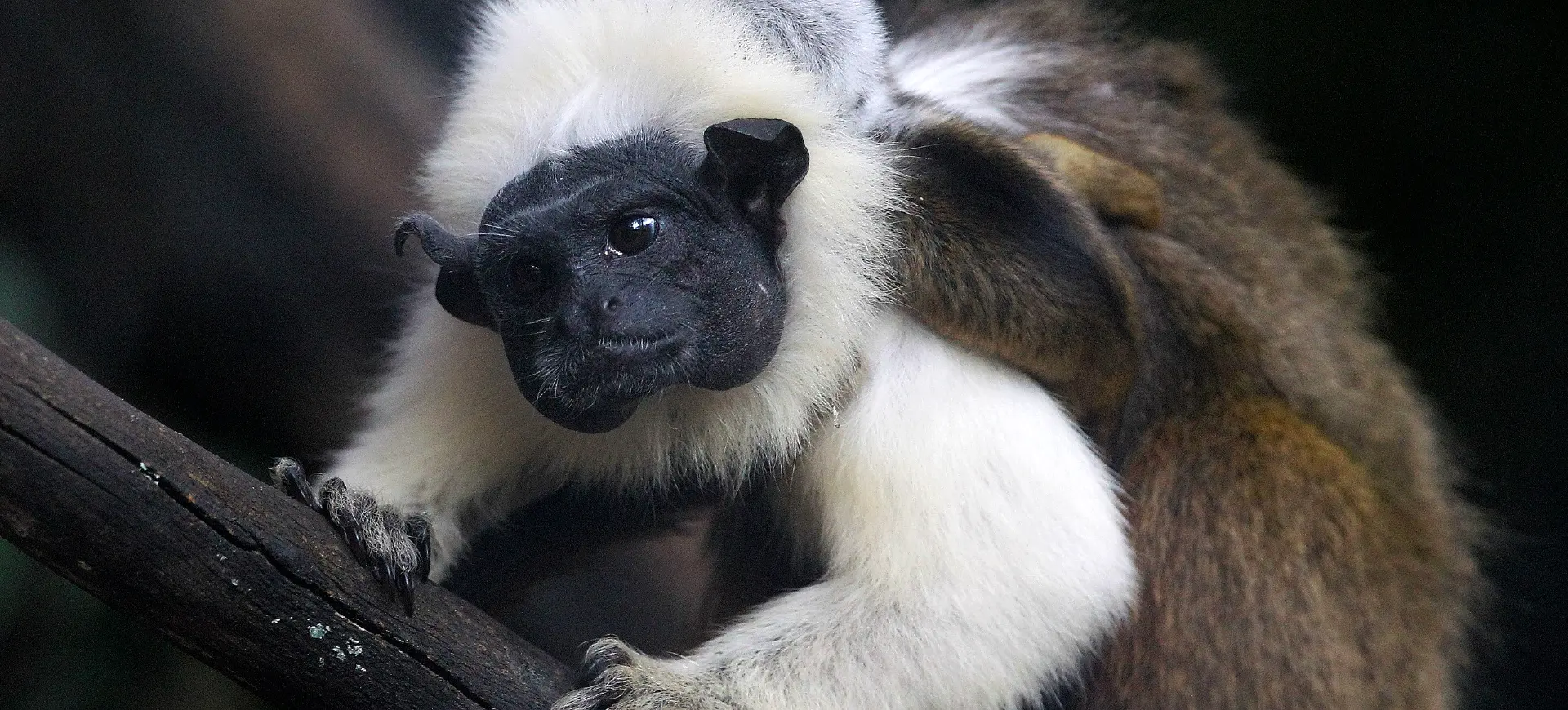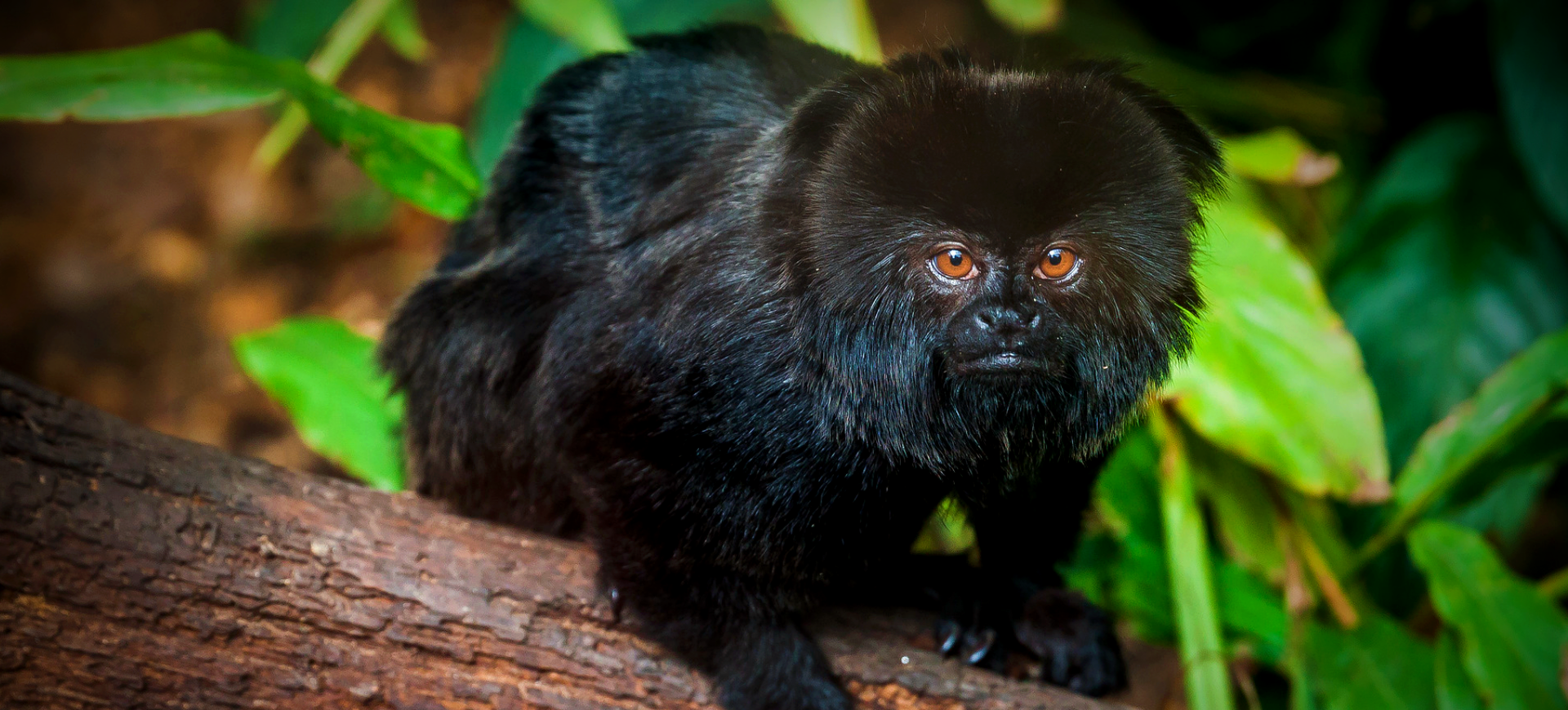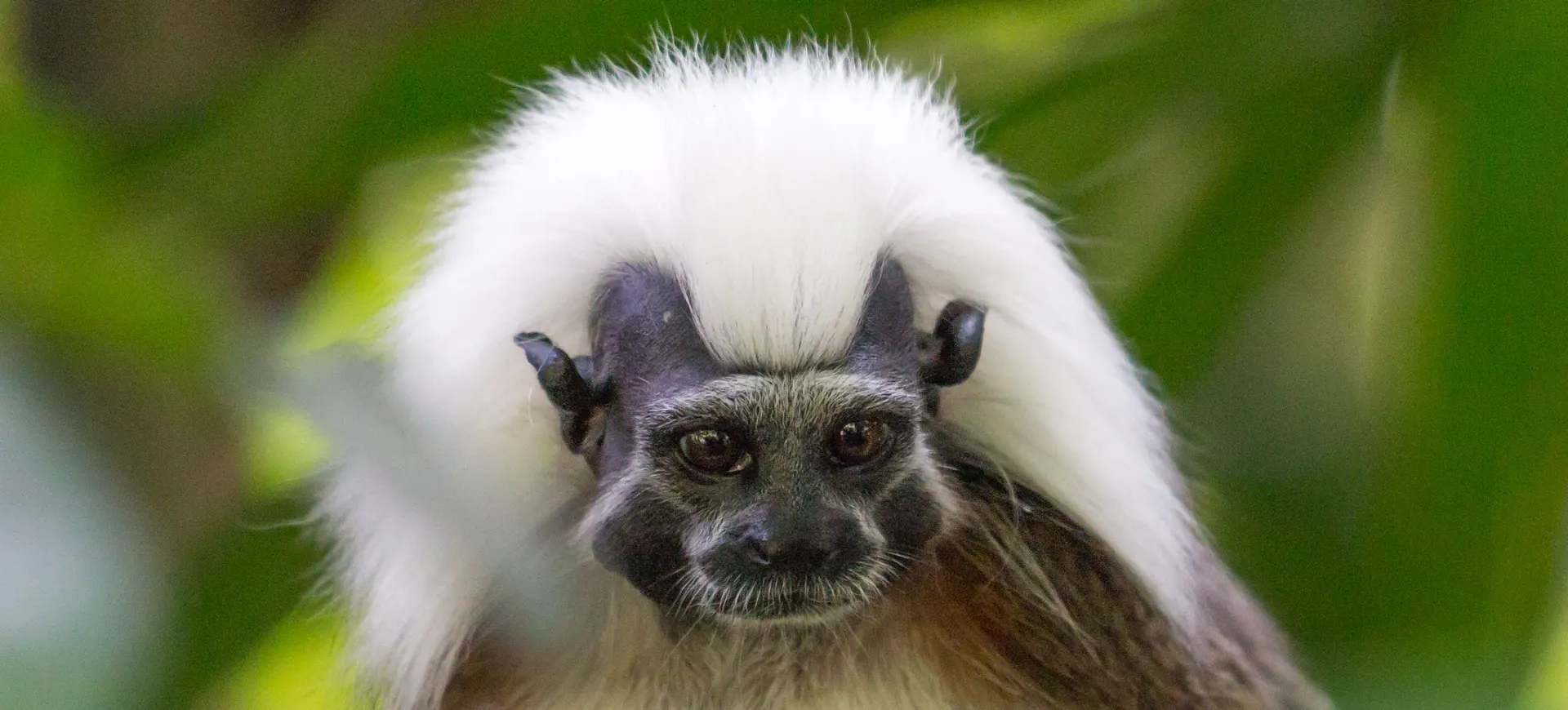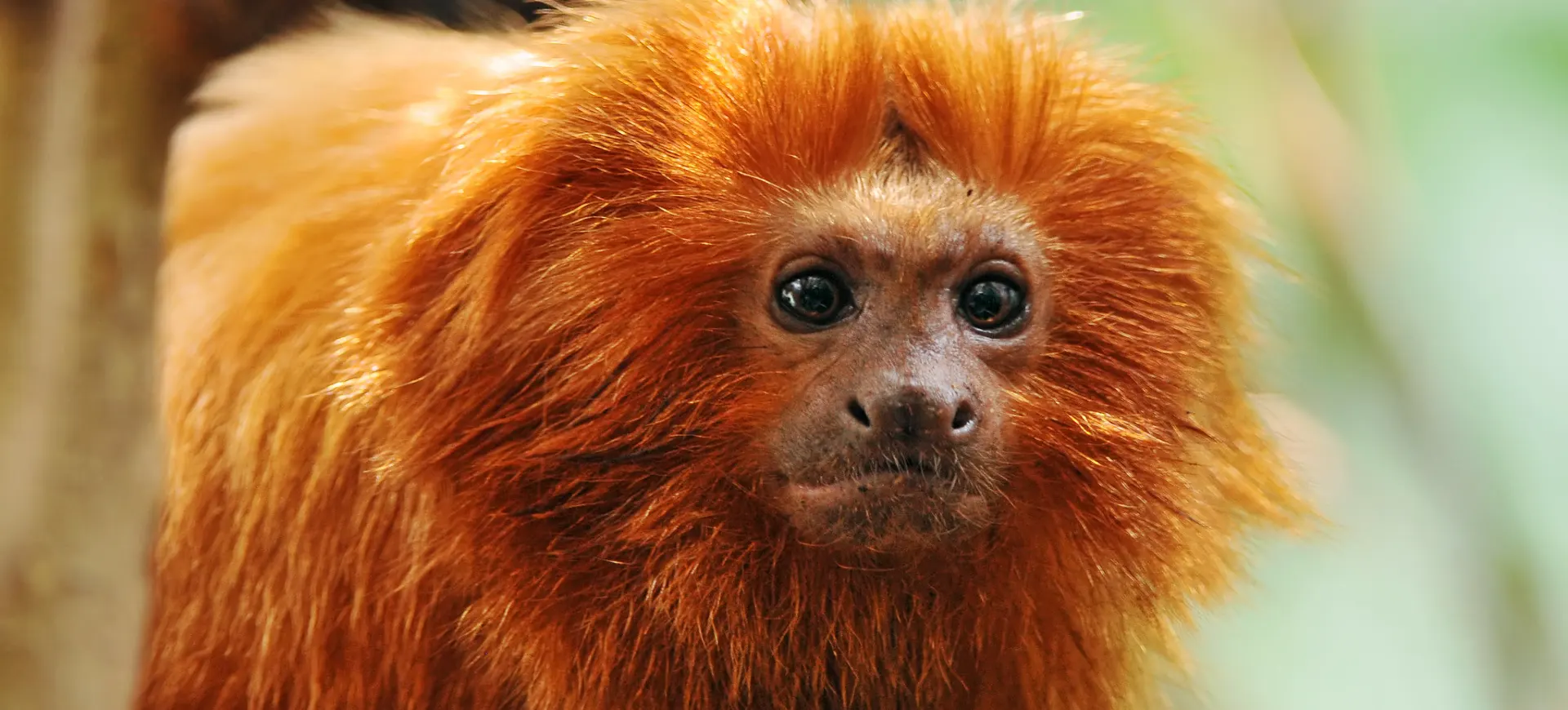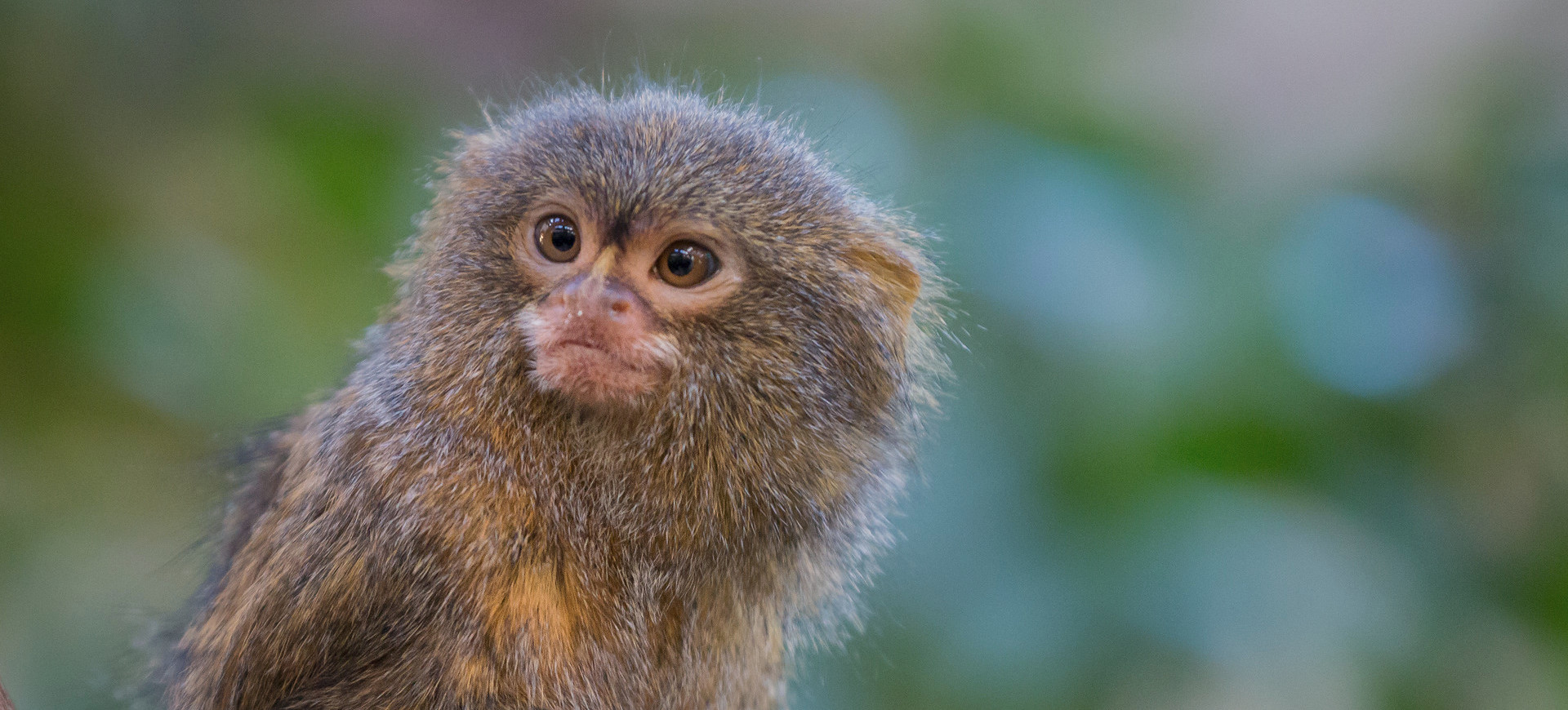Overview
The Bearded Emperor Tamarin (Saguinus imperator subgrisescens) is a small and distinctive primate subspecies in East Peru, North Bolivia, and West Brazil in the southwestern Amazon Basin. Named for their striking resemblances to the German Emperor Wilhelm II, these monkeys have a distinguishing feature of long, white, drooping mustaches and beard-like tufts of fur. Their bodies are predominantly grey with reddish-brown hues on their backs and yellow-brown hues on their undersides, and they have black hands and feet.
Bearded Emperor Tamarins are diurnal, spending their days foraging and socializing within the rainforest canopy. They are arboreal creatures, adept at moving through the trees, and rarely descend to the ground. These monkeys live in cooperative groups where all members share responsibilities such as foraging, defending territory, and caring for the young. These groups can consist of multiple males and females, with a dominant female that leads the group.
The Bearded Emperor Tamarin exhibits a unique social system where the males primarily care for the young. This allows the dominant female to conserve her energy for producing offspring. Communication within the groups is highly developed, with various vocalizations, scent marking, and physical gestures used to maintain social bonds, alert others to danger, or express moods and intentions.
Taxonomy
Kingdom
Phylum
Class
Order
Family
Genus
Species
Sub Species
Type
Current distribution:
The Bearded Emperor Tamarin is distributed across the Southwestern Amazon Basin. They are primarily found in East Peru, North Bolivia, and West Brazil. Despite this relatively large distribution, the Bearded Emperor Tamarin populations are highly fragmented due to habitat loss and degradation.
These resilient and adaptable primates inhabit various forest habitats, including primary, secondary, and seasonally flooded forests. However, ongoing deforestation and human encroachment continue to pose significant threats to the survival of this species, leading to further fragmentation and isolation of their populations.
Physical Description:
The Bearded Emperor Tamarin is a small primate with significant features that make it easily recognizable. The long, white, drooping mustache is the most distinctive feature, along with a lesser beard that gives them their name. These primates exhibit sexual dimorphism to a certain degree, with males slightly larger than females.
The coat of the Bearded Emperor Tamarin is mostly grey, with reddish-brown coloration on their backs and yellowish-brown coloration on their undersides. Their hands and feet are black, and they have long, non-prehensile tails that aid in balance when navigating the treetops. The Bearded Emperor Tamarin’s face is dark, contrasting sharply with the white mustache and beard.

Lifespan: Wild: ~15 Years || Captivity: ~20 Years

Weight: Male: 0.9 lbs (0.41 kg) || Female: 1.1 lbs (0.5 kg)

Length: Male: 9.3-10.5 in (23.6-26.7 cm) || Female: 9.8-11.0 in (24.9-27.9 cm)

Height: Male: 9.1 in (23.1 cm) || Female: 9.8 in (24.9 cm)

Top Speed: 24 mph (38.6 km/h)
Characteristic:
Native Habitat:
The Bearded Emperor Tamarin is native to the southwestern Amazon Basin, inhabiting the tropical rainforests of East Peru, North Bolivia, and West Brazil. These primates prefer dense, undisturbed primary and secondary forests but can also be found in seasonally flooded forests near rivers. They occupy the mid to lower levels of the forest canopy and are rarely seen on the ground.
The home range of a Bearded Emperor Tamarin troop is quite large, often overlapping with the territories of other troops. These overlapping territories seldom result in conflict, as the tamarins have been observed foraging together peacefully. The forest habitat provides food and refuge from predators, as these tamarins prey on various forest-dwelling species, including raptors, snakes, and larger mammals.
Climate Zones:
Biomes:
WWF Biomes:
Biogeographical Realms:
Continents:
Diet:
Diet & Feeding Habits:
Bearded Emperor Tamarins are omnivores with a diet that includes a variety of fruits, flowers, nectar, tree sap, insects, spiders, small vertebrates, and bird eggs. They forage in the mid to lower levels of the canopy, often using their nimble fingers to extract insects from crevices in the bark of trees.
They use their sharp, claw-like nails, a characteristic of the tamarin family, to cling to the sides of trees while eating or probing for insects. Despite their small size, these primates have a large home range due to their need for a varied diet. Their foraging activities are critical to their ecosystem as they aid in seed dispersal, contributing to maintaining their tropical forest habitat.
Mating Behavior:
Mating Description:
Bearded Emperor Tamarins exhibit a unique reproductive system known as cooperative polyandry, where a single dominant female mates with multiple males within the group. This unique mating system is believed to have evolved due to the high energetic costs of reproduction for females and the ability of multiple males to share the workload of carrying the offspring.
Mating occurs throughout the year, with no specific breeding season. After a gestation period of approximately 145-150 days, the dominant female gives birth to usually two offspring. Remarkably, the males carry, groom and watch over the young, returning them to their mothers only for nursing. This unique behavior allows the female to recover and reproduce again more quickly.
Reproduction Season:
Birth Type:
Pregnancy Duration:
Female Name:
Male Name:
Baby Name:
Social Structure Description:
The Bearded Emperor Tamarin lives in cooperative groups of two to eight individuals, typically comprising one dominant female, multiple males, and their offspring. This social structure is unique among primates, with the males taking on the primary role in rearing the young. These groups are highly cooperative, with all members participating in activities such as foraging, territorial defense, and grooming.
Communication within the group is highly developed, involving a range of vocalizations, facial expressions, body postures, and scent markings. These behaviors serve various functions, such as maintaining social bonds, expressing aggression or submission, or alerting others to the presence of predators or food sources.
Groups:
Conservation Status:
Population Trend:
The exact population size of the Bearded Emperor Tamarin in the wild is currently unknown due to its fragmented distribution and the difficulty of conducting comprehensive surveys in its dense, forested habitat. However, the species is listed as “Least Concern” by the IUCN, indicating that it is not currently considered threatened with extinction.
Despite this, the Bearded Emperor Tamarin population is believed to be declining due to ongoing habitat loss and fragmentation. The expansion of agriculture, logging, and human settlements continues to degrade and reduce the available habitat for this species. Furthermore, the isolated nature of many tamarin populations raises concerns about their long-term genetic health and adaptability.
Population Threats:
Habitat loss due to deforestation, agriculture, logging, and human settlement expansion is the primary threat to Bearded Emperor Tamarins. These activities degrade the quality of their forest habitats and isolate populations, making it difficult for them to find food and mate. Additionally, climate change impacts, such as altered rainfall patterns and increased frequency of extreme weather events, may pose future threats by disrupting their food supply and habitats.
Moreover, while they are not widely hunted for meat or captured for the pet trade, these activities can locally pose a threat. Infectious diseases are another risk, particularly in fragmented habitats near human settlements or agricultural areas, where the monkeys may contact domestic animals or contaminated water sources.
Conservation Efforts:
Conservation efforts for the Bearded Emperor Tamarin primarily focus on habitat protection and restoration. This involves establishing and managing protected areas, implementing sustainable forestry practices, and promoting reforestation efforts in degraded habitats. Educational initiatives aim to raise awareness about the importance of forest conservation and the role of species like the Bearded Emperor Tamarin in maintaining healthy ecosystems.
Further research into the species’ ecology, behavior, and population dynamics is crucial for developing effective conservation strategies. Monitoring and studying species can help identify key habitats, migration corridors, and threats, informing management decisions and conservation planning. While the Bearded Emperor Tamarin is not endangered, continued conservation efforts are crucial to ensure its long-term survival despite ongoing habitat loss and climate change impacts.
Additional Resources:
Fun Facts
- The Bearded Emperor Tamarin was named due to its striking resemblance to the German Emperor Wilhelm II, known for his large mustache.
- Despite being small in size, these tamarins have a large home range due to their varied diet.
- Males take on the primary role of caring for the young, a unique characteristic in the primate world.
- Bearded Emperor Tamarins have a highly developed system of communication, including vocalizations and physical gestures.
- Their diet and foraging behavior play a crucial role in seed dispersal, contributing to the maintenance of the forest ecosystem.
- They are capable of jumping distances of over 60 feet (18 meters) when moving through the canopy.
- They are one of the few primate species where the males typically live longer than females.
- The Bearded Emperor Tamarin has sharp, claw-like nails, unlike most primates, which have flat nails.
- Their home range often overlaps with that of other tamarin troops, but conflicts are rare.
- They have a gestation period of around 145-150 days, after which usually two offspring are born.

